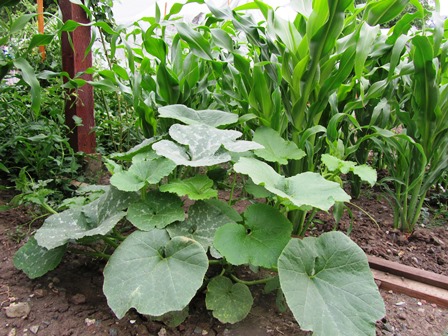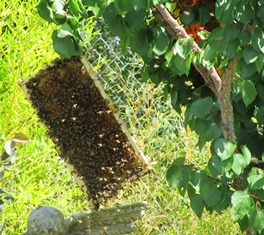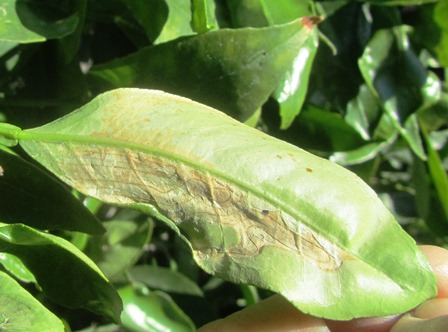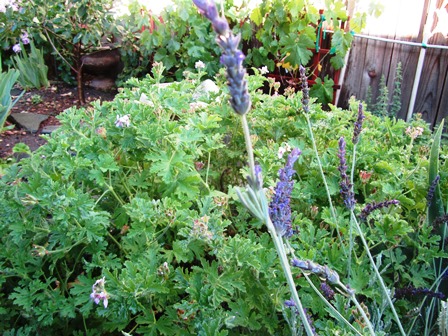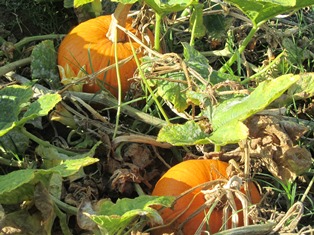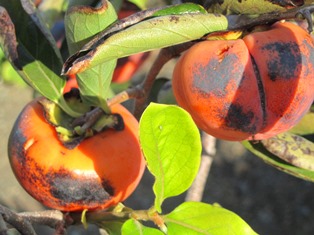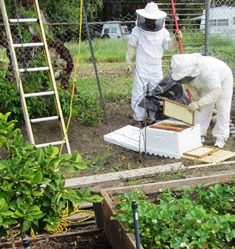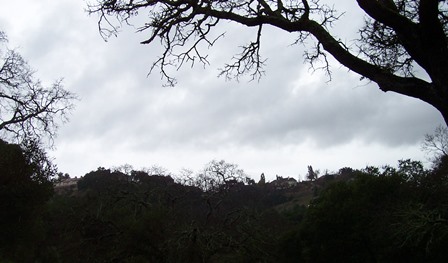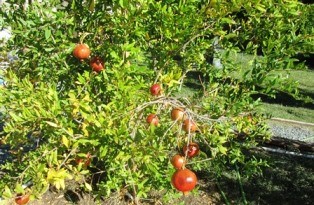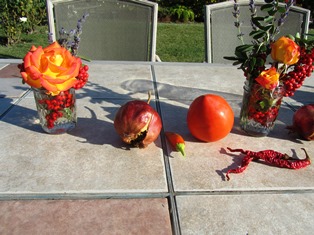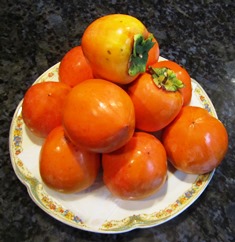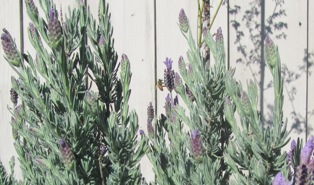Archive for the 'Gardening' Category
Urban Farms Make Sense for Lots of Reasons
Reduce city blight. Give city residents the opportunity to farm. Grow food for low-rent residents. Eliminate illegal dumping. Create public gardens on private land until the owner decides on another use. Lower property taxes for land owners. Improve the local environment. These are just a few reasons urban farms make a lot of sense and should be promoted.
As it turns out, the city of San Francisco is leading the way. The city has a new law offering financial incentives in the form of reduced property taxes for owners of empty lots who permit agricultural use of their land for at least five years or more.
Part of the statewide Urban Agriculture Incentive Zones Act, the law encourages potential urban farmers to convert weedy, empty lots or those covered in trash into gardens. These urban farmers necessarily would have to put in resources such as labor and money but the law ensures they cannot be forced out of their contracts, thus losing their investment.
The law is the brainchild of sustainable land-use advocates and state Assemblyman Phil Ting, D-San Francisco. Cities must first pass the necessary local ordinance and San Francisco has already done that.
Urban farmers must comply with local ordinances with regard to keeping bees and farm animals. But the idea of urban gardens reducing blight (which may also be prone to illegal dumping) has wide appeal for cities eager to stabilize property values and also provide more green spaces.
While other cities in California explore the environmental benefits of urban farms (including Fresno, Los Angeles, Sacramento, San Diego, and San San Jose), San Francisco leads the way.
A city lot must meet certain qualifications: it has to be at least one-tenth of an acre. Additionally, there must be no permanent buildings on the lot. Qualified lots are re-assessed with a significantly lower tax bill for its owner.The new tax assessment is based on the average rate of irrigated farmland.
The idea of more urban farms means a win for the city, local residents, the land owners, and the environment.
Spate of Warm Weather Brings Out Early Blosssoms
While schools across the nation are taking snow days because of frigid temperatures, the fruit trees on my Bay Area farmette are showing signs of bud swelling and early blossoming because of a winter heat wave.
Cities around the San Francisco Bay are experiencing early January temperatures of 70-plus degrees Fahrenheit, breaking weather records in some areas. Mother Nature certainly behaves strangely at times.
My five-variety apple tree and the early Desert Gold peach trees are covered with buds that are already showing color. I haven’t as yet gotten around to the winter pruning and spraying with organic oil. Maybe if there’s no wind today, I’ll squeeze that chore in with the others.
I did cut back the Washington navel orange that is infected with Leaf Miner, a pest that’s crossed the United States from Florida. It attacks new leaves, so I’m thinking if I prune and spray now before spring is in full swing, maybe I won’t lose this tree. Curiously, the pest hasn’t widely infected my blood orange trees but there are signs of it in the leaves of our Satsuma seedless tangerines.
Elsewhere, I’ve done deep digging in the chicken run and added some wood chips and leaf material for compost.
The tea roses have been pruned back to 12 to 18 inches and old canes removed. I’m torn between wanting to add more roses in the beds in front of the bamboo plants on the east/west axis of our property or adding more lavender and sunflowers, favored by the bees.
Tomorrow, I’ll open and inspect my bee hives. I left honey stores this past autumn instead of harvesting. But if the bees have gone through all the honey, then I’ll have to add bee food until we get the first early bulb blooms and wildflowers. The French perfume lavender that the bees love is about the only bloom (bee food) in the garden now. Luckily, I planted a lot of it.
The farm chores don’t just seem endless, they are. But whether the work is daily, weekly, or seasonal, there’s something deeply rewarding–even magical–about living close to the earth in harmony with cycles of seasons and the rhythms of nature. But I admit, it is a little strange to have such warm weather when winter has only just started.
Finding Surprises in my December Garden

Open-pollinated, heirloom tomatoes produced lots of tasty fruit over the summer, but . . . in December?
It’s the second week of December and the Winter Solstice is about to arrive next week. Walking through the bleak garden landscape, I wasn’t expecting any of my summer plants to still be producing. But surprise, surprise.
A cluster of red grape tomatoes were still clinging to a vine that had become overgrown by weeds. Not only was fruit still hanging on the vine, but the plant was setting up new blooms. I can only assume the reason for that is that we’re having unseasonably warm temperatures in the Bay Area.
I harvested a 10-pound bag of red and yellow onions at summer’s end. Now I’ve got a new bed where the onion heads re-seeded. I do hope these bulb onions make it through to spring. I might just build a cold frame over them.
In raised beds, the jalapeno and Thai chili peppers that wilted and drooped during the terrible drought this summer have responded to recent rains with lots of ripe peppers and also new blooms.
It’s very strange as these babies need water and high heat; our Bay Area temperatures are hanging in the 60s Fahrenheit during these early days of December.
I harvested the pumpkins and squash but hadn’t yet pulled out the old vines for composting. The hard-skinned pumpkins and squashes can be peeled, cut into cubes, and frozen for use later in culinary creations such as soup.
Further on, I picked the last of the persimmons and pomegranates. These are my favorite fall fruits. And if you’ve ever dropped ripe pomegranate seeds onto the ground, you’ll soon see that the chickens love them, too.
Having uncovered all the garden’s surprises, my thoughts turn to how I’m going to lay out the garden next year and which heirlooms to grow. The garden soil needs to rest as we Bay Area gardeners welcome the rain now that the Pacific storm door has finally opened.
How My Real Life Informs My Art
Every story needs a setting, a world in which something happens. For my cozy mysteries, I didn’t set out to create a new world for my coterie of characters, I just appropriated details of the life I am living as a farmette dweller.
Daily chores on our Henny Penny Farmette provide plenty of fodder for my fictional stories. Our daily activities include chicken care, garden and orchard work, beekeeping, cooking and preservation of vegetables and fruits, renovating the antiquated farm house, fixing sheds, and building fences and retaining walls.
Stories need a sense of verisimilitude for readers to suspend disbelief and join the fictional journey. Drawing upon my real-life experiences, I can easily integrate my adventures in my books. And not only my activities, but also experiences of my architect husband who is ever-occupied with making our old house more liveable.
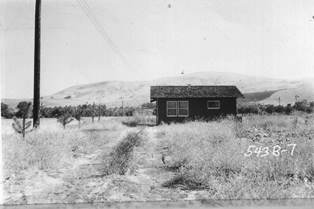
In this 1953 photo, our little house sat in a great, big field with not much around it; the dwelling faced Mount Diablo (still does) and the Delta and great central valley lie to the northeast
The tax assessor told me that our dwelling might have been a mining shack in the late 1940s (we live near Mt. Diablo and Lime Ridge where mining and rock quarrying were once important industries). We’ve also been told that our little house might have later served as a farm home (we live less than two miles from designated agricultural farmland). The structure desperately needed updating when we found it almost five years ago. But as settings go, the house and farmette work great.
We have since used recycled and reclaimed materials, sale items at big box DIY stores, and gifts (like lumber, stone, and windows/doors) from friends who do demolition on estates. We’ve visited companies that sell granite and asked for permission to take broken stone from their dumpsters. Thus, we’ve created a lovely bathroom floor with found materials that we’ve cut and sanded.

Light from a crystal chandelier dances off the new granite counter, but the floors were not yet installed when this photo was taken
Of course, the exact details of our daily activities may not make their way into my stories, but versions of them sometimes do. At the very least, such activities inform my storytelling. I daresay the chickens and bees serve important roles in my mysteries. And each new day brings new adventures, from foxes showing up to skunks and raccoons raiding our fruit and nut trees.
Lately, a new chicken showed up on our property (a heritage chicken that had the ability to fly over my neighbor’s fence). She’s been staying here ever since. Wild turkeys often take a path through the property and once or twice a gorgeous stallion named Romeo and its owner ride by and say hello. Such events can add textural details to the setting of a story.
Farmette Projects Don’t Stop, Even with the Rain
The rains have arrived in the Bay Area . . . finally. Although my hubby and I are thankful for the wet stuff, we weren’t quite ready.
Our sheds have leaky roofs. I also need to install a different kind of gate on my chicken run; one that won’t swell with moisture and get stuck so that I can’t open it. I close the gate at night against predators, but the chickens free range in the yard during the day.
Our supply of building materials is dwindling as we are completing some projects. Much of the stone and retaining wall materials, torn out from estates that are being re-landscaped, were donated to us. Carlos and I were only too glad to integrate them into our own landscape. We work on it little by little.
With mud everywhere, I probably appreciate more than anyone having the flagstone leading to the front door, however, we still need to fill the spaces between the flagstone with gravel.
We’ve built fences and put up the frame for an entrance trellis where the gate will go in. We also have constructed a porch trellis that I will grow wisteria over, but we have to install the porch floor first. We’re using plywood in the meantime.
The long half-circle driveway is packed dirt, although we have shoveled in gravel where my husband parks his truck. Now that the rains have arrived, the driveway is pretty muddy. We need to figure out whether we’ll put in gravel for entire length of the driveway (there’s some there now) or lay asphalt or stone.
So while it rains, I think about our master plan for the farmette. We’ve come a long way . . . but there’s still a huge distance to go and some projects can’t wait for spring like those leaky shed roofs.
Leafminer Larvae Can Destroy Young Citrus Trees
The new leaves on nearly all our citrus trees show signs of the presence of the citrus leafminer. The local garden center representative explained this pest is ravaging trees in our area. The pest’s name is fitting–its larvae tunnel into new leaves creating mining tunnels.
This pest came to California in 2000 by way of Florida, where it showed up in 1993 and began steadily moving westward. The citrus leafminer is native to Asia, but in the 1940s, it showed up in Australia. From there, it began to appear in other citrus-growing regions of the world.
The citrus leafminer is a small, light-colored moth. Its forewings are irridescent. The wing tips have a black spot. The hind wings and its body are white. Look for a serpentine tunnel on a new leaf and inside the tunnel is thin dark line, the frass (or feces) trail.

The citrus leafminer burrows into new leaves, creating tunnels that, in turn, make for an exotic mosaic appearance on the leaves
In its last stage before adulthood, the larva causes the leaf the curl up. The curling is the result of the larva rolling the leaf end around itself in order to pupate as it becomes an adult moth.
Older, hardened citrus leaves are not at risk. The citrus leafminer attacks only young, shiny, green, new leaves. Young trees are perhaps at greatest risk.
Citrus growers should prune their trees only once each year because pruning causes a flush of new growth, open for attack. Because of the difficulty of getting the product inside the tunnels, chemical control is not recommended. Also, traps using a pheromone attracts only the male moth. It gets stuck inside, but this won’t eliminate the citrus leafminer population.
Biological control is accomplished through parasites and predators. The non-stinging wasps, Cirrospilus and Pnigalio species are particularly effective against citrus leafminer since the parasites lay eggs inside the leafminer tunnels, either inside or on the top of the citrus leafminer larvae. The parasite egg hatches and the parasite larvae eat the leafminer larva. You don’t have to put these pests in your garden. They are attracted to citrus just like the leafminer is.
Nature has a powerful checks-and-balance ecosystem that works best when growers do not spray insecticides. Pesticides and insecticides disrupt predator activity and nature’s inherent balance.
Bumps and Scrapes–Just Part of the Renovation Process
I haven’t had to call on my first-aid skills in a while, but today I lost control of a tree trunk round (that must have weighed close to a hundred pounds). It broke the skin in several places, bruised the flesh, and caused swelling within minutes.

Silly me–if I’d worn boots instead of loafers, my leg would have been protected against cuts and bruises
Luckily, I didn’t break my ankle. This is my comeuppance, I suppose, for going against my architect husband’s admonition not to mess with those rounds regardless of how badly I wanted to keep work moving forward on the farmette landscaping at the front of our house.
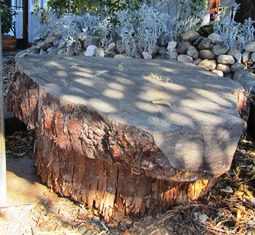
Two- to three-feet wide, these babies are no longer needed in the landscape and can trigger termite infestation when they lie against the soil
The way I see it, it’s only by us tackling something every day that we will ever be able to complete the restoration that this old place needs. I believe it’s been without tender loving care for at least a generation.
Last week, my husband brought in a bobcat and within a few hours had hauled away stone, dirt, and dead stumps. We can now lay paving stones to create a sitting area for outdoor entertaining. The floor he laid at my daughter’s house is pretty and functional. She tells me they love the area and so do their children and friends.

This patio floor that my husband recently laid required several stone shapes and two colors–gray and terra cotta
Out front, we’ve transferred the irises to a raised bed, but the tree that was severely diseased, as well as rocks and wooden stumps, are gone now.
My husband tells me we’re going to get some help with the landscaping work at the front of our property this week. So, in case he warms to the idea of letting me participate, too, I’ll get out my boots, bandana, and straw hat.
You can take the girl off the farm, but you can’t take the farm out of the girl. What can I say . . . I just love digging in the dirt even when it involves the personal risk of bumps and scrapes–isn’t that expected when doing renovation?
*Update on the foot–checked by a doctor and no break. I’ll be drop kicking turnips in no time!
How to Repay the Thoughtful Gift of a Truckload of Manure
I begin obsessing about soil and manure this time of year after the summer garden is gone. The old adage of: take care of the soil and it will take care of you (via your plants) is really true. Out here on the farmette, the clay soil is so heavy that it cracks open in fissures during summer, so we are always working to improve it.
Recently, a generous friend brought us a truckload of horse manure. It was no small truck either. The manure seemed mostly aged and I could easily rake it into our flower beds and little lawn. Some of though is still relatively green, not aged, and I worry about using it to grow my winter crop of vegetables for fear of E-coli contamination.
There’s a new area where we are debating or not to put down a stone floor and just grow trees and flowers in a container wall on two sides. It might be the perfect place to use some of that horse dung.
In the meantime, on the property behind ours, the horse manure has been spread out with a bobcat to keep the growing areas fertile for the trees that were planted there nearly four or five decades ago.
There are all kinds of manures one can use in the garden, from bat guano and worm casings to animal waste products–horse, cow, sheep, steer, turkey, rabbit, and chicken, for example.
You can get manure tested, much like you can soil, to detect levels of nitrogen, phosphorus, and potassium. Not all manures are high in nitrogen, which is loved by many gardeners for that sudden growth and burst of bloom. Some manures, like cow and horse, also can carry seeds of weeds or whatever the animal has grazed on, which can emerge in your garden.
Most manures can be made into a fertilizer “tea” by mixing with water. Whether you apply aged manure or manure tea, always wash your fruits and vegetables well before eating to reduce the risk of consuming contaminated fruit or produce.
We appreciate our friend’s gift. Now . . . we wonder how to repay his kindness. I’m thinking a basket of persimmons and pomegranates, a French sugar pumpkin, a dozen organic eggs, and jars of jam and honey.
The Bee Garden Favorites
I spent Sunday building a rock circle around the circumference of our towering elm tree. I want to conserve water around the base of the tree and to also grow more plants for my bees to have abundant food.
We had a pile of river rock donated to us, so I thought it might look nice to create a wide circle, maybe three feet high around the tree like a watering basin/retaining wall, using the rock.
Inside the circle, I transplanted some yarrow and white geranium. Already, there are white roses that boom all summer long under the tree.
But bees like nectar-rich plants with pollen, so I’ve put together a list. Over the next week, I’ll add some of these in my new bed beneath the elm. This is a partial list of plants bees love.
- Rosemary
- Lavender
- Russian sage
- Basil (African blue)
- Honeywort
- Mexican Sunflower
- Borage
- Cerinthe
- Greek oregano
- Sweet marjoram
- Purple coneflower (echinacea)
- California poppies
- Lupine
- yarrow
- sunflowers
Eucalyptus on the property behind our farmette is not yet covered with fall bloom. The bees love that bloom but now they make do with the star thistle on the brown hillsides and by foraging on the French perfume lavender and the Spanish variety in my garden.
Of late, I’ve discovered the honeybees foraging on the sweet nectar at my hummingbird feeders, so I worry about them getting enough food. The drought has sapped everything. At any rate, I’ll hold off taking honey this fall, leaving it in the hives for the bees. They’ll need food to get through the rainy season.
To-Do List of Chores for the Fall Garden
From my office widow, I look out over what once was a lush and thriving garden. Not so today.
I can hardly bear to gaze upon the sorrowful, dried tomato vines that for me have come to symbolize the severity of the extreme drought on California gardens.
Now that fall will soon arrive, I’ll toss onto the compost pile those vines along with others from pumpkins and hard-shelled squash.
So with the garden cleared, I’m thinking ahead to next year, ever hopeful we’ll get rain rather than a repeat of dry conditions like this past year.
To ensure the viability of our fruit trees, citrus trees, and various berries through the fall and winter, there is a spray regimen to be initiated. I’ll add it to my long list of chores that will need to be done.
MY FALL CHECKLIST FOR THE GARDEN
Turn the soil, add amendments like compost to hold in the water.
Prepare new beds.
Build cold frames and 4- x 6- foot boxes for new raised beds.
Cut the canes of blackberries (berries only set up on two-year-old canes that won’t again produce; cut to ensure new fruiting canes will take their place).
Prune away the spent floricanes of red raspberries, once they’ve produced fruit.
Clean up around the bases of all trees and evergreen plants; add mulch.
Also remove all leaves at the base of all fruit trees and dispose.
Remove rose leaves after blooming season, cut canes to 18 inches, and spray for diseases and pests.
Stake young trees so they’ll survive windy winters, growing straight and tall.
Treat the trees with an organic spray (one containing copper and protector oil) to prevent fungal disease and pests.
Get out the frost cloth in readiness to cover tender citrus trees.
Prune back the hydrangeas.
Plant fall bulbs for spring flowering.
 Facebook
Facebook Goodreads
Goodreads LinkedIn
LinkedIn Meera Lester
Meera Lester Twitter
Twitter





